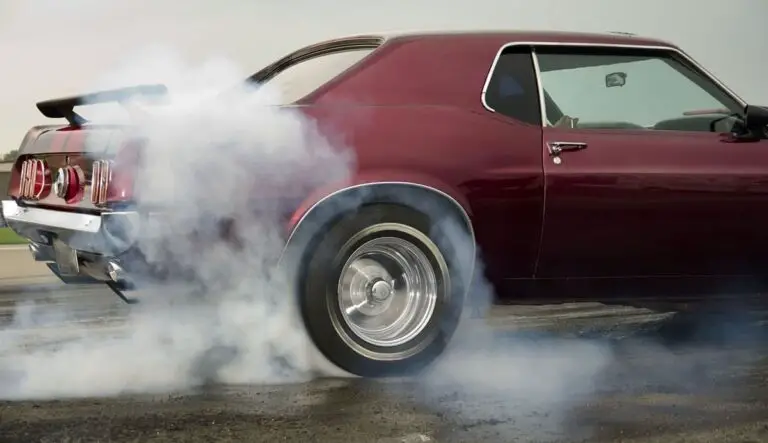Best & Worst Ford F150 Years (Updated In 2024): Expert Analysis

The Ford F-150 has been the best selling truck in America for over 4 decades. With the F-150 being so popular, many prospective buyers research the best and worst model years before making their purchase.
So what are the best and worst Ford F-150 years to buy used or new? When weighing reliability, performance, features, capability and owner satisfaction, the 2004, 2009, 2015 and 2018 model years are among the best while the 1997, 2003, 2008 and 2011 had the most problems.
In this detailed guide, we’ll overview the highs and lows of the Ford F-150 during the past 20+ years and identify which model years came out on top for:
- Reliability
- Performance
- Technology Features
- Off-road Ability
- Comfort and Convenience
- Safety Ratings
- Owner Satisfaction
By understanding the key strengths and weaknesses of each model year, truck shoppers can make an informed choice when searching for a used or new F-150. Let’s hit the open road and explore the best and worst Ford F-150s since 1997!
Table of Contents
Brief History of the F-150
The F-150 has been America’s best selling truck for 44 consecutive years and the best selling vehicle overall for 38 years. Over 40 million F-Series trucks have been sold since 1948.
With such consistent popularity, Ford is constantly making tweaks, revamps, and upgrades to continue attracting buyers to the F-150 lineup. Major changes come every 5-7 model years with mid-cycle styling updates in between.
While the core F-150 capabilities and attributes have remained largely the same over the decades, improvements in horsepower, torque, towing capacity, off-road performance, fuel efficiency, comfort and tech have varied significantly across different model years.
Understanding these key differences will ensure truck shoppers choose a model year best aligned with their needs whether they want max towing ability, a smooth ride, or the latest tech gadgets.
Now let’s break down the model years that got it right when it comes to reliability, performance and owner satisfaction – and those that came up short.
Most Reliable F-150 Model Years
While no vehicle is problem-free, some model years have proven to be more dependable and hassle-free based on consumer surveys, recalls, and owner reviews. Here are the Ford F-150 years with the best track record for reliability:
2004
The 2004 F-150 took top honors as the most reliable F-150 model year in several studies. The 2004 truck had very few owner complaints aside from some ignition coil issues on 5.4L Triton V8 models. These were resolved with updated coils under warranty. Otherwise, the 2004 saw only minor transmission and electrical issues. The interior held up well over time too.
2009
The 2009 model year was a bright spot for reliability after several problematic versions. The 2009 model got high marks for safety, fuel economy and low maintenance costs from owners. The 4.6L and 5.6L V8 engines run strong even at high mileage with few issues aside from some spark plug problems on the 5.4L. The 4-speed automatic transmission also proved more durable than previous years.
2015
After Ford switched to an aluminum body in 2015, these models became highly rust resistant and durable. The high output 3.5L EcoBoost V6 introduced this year also gained a reputation for reliability and efficiency paired with the new 10-speed automatic. Both Consumer Reports and J.D. Power give the 2015 top marks for predicted reliability.
2018
In recent years, the 2018 F-150 stands out for dependability and owner satisfaction according to surveys. Ford added more tech features this year like Adaptive Cruise Control, while the 2.7L EcoBoost engine and 10-speed transmission combinations continue to perform well. These late model years also get high safety scores and decent fuel economy.
Reliability Focus
We compiled this list of the most reliable F-150 years based on expert assessments from Consumer Reports and J.D. Power along with long-term owner reviews on forums and sites like Edmunds. Factors like recall frequency, maintenance costs, engine/transmission durability and electrical issues were all considered. These years stood out for minimal trips to the shop and high mileage longevity.
Consumer Reports F-150 Reliability By Year
Study: F-150s with Least Recalls
Least Reliable F-150 Model Years
On the flip side, some F-150 model years unfortunately saw more than their fair share of mechanical problems, breakdowns and costly repairs. Here are the least dependable F-150 years based on owner experience:
1997
Issues with ignition switches turning off while driving plagued many 1997 models. This led to an extensive recall but was an early reliability red flag. The 4.2L V6 was underpowered while the manual transmission had high failure rates. Electrical gremlins and front suspension issues further hurt dependability.
2003
The 5.4L 3-valve Triton V8 in 2003 models became notorious for ejecting spark plugs under stress and overheating issues. Owners faced expensive repairs if beyond the extended plug warranty. Transmission shuddering and rear end noise were other complaints with 2003 trucks.
2008
The new body style of the 2008 F-150 unfortunately came with plenty of teething issues. Transmission problems were most common, with rough shifting and premature failures reported. Further, cam phaser and timing chain issues plagued the 5.4L in ’08 models leading to expensive engine repairs.
2011
Ford’s new 3.5L EcoBoost V6 debuted for 2011 but came with major dependability issues that model year. Oil leaks, turbo failures and blown head gaskets were among frequently reported problems faced by frustrated owners well before 100k miles.
What Went Wrong?
Ford clearly dropped the ball on reliability with these problematic years. Engine issues ranging from spark plugs ejecting to cam phaser problems made repairs expensive. Transmission durability took a hit on ’97 and ’08 trucks. The ’03 and ’11 models prove that newly introduced engines often face kinks their first year. Rushed development or lax quality control were contributing factors on these model years.
TSB 09-8-4 – Spark Plug Issues on 5.4L 3-Valve
Top Performance Model Years
While the F-150 provides plenty of power and capability across all models, some years stand out for bringing significant horsepower, torque or towing upgrades. Here are the best model years for performance:
2011
The 411 hp and 434 lb-ft of torque provided by the new 6.2L V8 for 2011 delivered a huge boost over 2010’s 310 hp top engine. Paired with the smooth shifting 6-speed automatic, the 2011 F-150 was capable of 11,300 lbs of towing. The 3.5L EcoBoost was also introduced this year, though less reliable.
2015
When paired with the new 10-speed transmission, the second gen 3.5L EcoBoost in 2015 models upped output to a stout 365 hp and 420 lb-ft torque while still providing 17/23 mpg fuel economy. The 2015 could tow up to 12,200 lbs and haul 3,180 lbs. The 5.0L V8 was also improved to 385 hp.
2017
The big news for performance in 2017 was the new 10-speed automatic transmission paired with the 3.5L EcoBoost. The extra gears enhanced efficiency and acceleration. Towing also increased to 13,200 lbs with the Max Towing package. The 5.0L V8 got a bump to 395 hp.
2020
A new 7.3L gasoline V8 joined the lineup for 2020, providing tough truck capability and high torque at low RPMs. When paired with the 10-speed transmission, it achieves 18/23 mpg. The 2020 lineup also introduced the new Tremor off-road package and Pro Power onboard generator.
Horsepower and Capability Focus
Ford clearly focuses heavily on improving the performance specs of the F-150 such as horsepower, torque, towing capacity, payload and acceleration with each model revision. Standout years like 2011 and 2015 introduced new EcoBoost engines and transmissions that elevated capabilities compared to previous models. Towing and payload continue to increase, giving buyers more truck for the money.
| Model Year | Horsepower | Torque (lb-ft) | Max Tow (lbs) |
|---|---|---|---|
| 2011 | 411 | 434 | 11,300 |
| 2015 | 365 | 420 | 12,200 |
| 2017 | 395 | 400 | 13,200 |
| 2020 | 400 | 500 | 13,200 |
Car & Driver F-150 Towing Showdown
Worst Performance Model Years
While Ford aims for continual performance improvements, not every model year upgrade hit the mark. Some engines actually felt underpowered or capability decreased. Here are the F-150 years that represented a step backwards for pickup performance:
1997
The base 4.2L V6 in 1997 models put out an anemic 190 hp and lacked torque. Even the optional 4.6L V8 with 231 hp left buyers wanting more power under the hood. Towing maxed out at a modest 7,500 pounds.
2002
The 4.6L Triton V8 was improved with variable valve timing in 2002 but output of 231 hp and 293 lb-ft torque lagged behind GM and Dodge rivals. Towing capacity also capped out at 8,200 lbs this model year.
2009
Coming off better performing 2008 models, the 2009 oddly regressed when it came to max tow rating, which dropped to just 6,100 lbs after averaging around 10,500 lbs prior years. Horsepower from the three V8s (248, 292, 320) remained unchanged.
2019
The all-new 3.3L V6 introduced in 2019 struggled to move the aluminum-body F-150 with just 290 hp and 265 lb-ft torque. Performance felt lackluster, especially for a newly designed engine. It lagged behind rivals’ base V6s.
Lacking Pickup
During these years, Ford either failed to introduce improved powerplants or swapped them out for seemingly underpowered options. After making steady towing capacity gains during the 2000s, the 2009 strangely regressed. Ford also continued using an anemic V6 base engine in 2019 when competitors had already moved to more capable V6s. These models clearly fell short on pickup truck performance expectations.
Ask a Mechanic: 2009 F-150 Towing
Model Years With Best Tech Features
Ford consistently moves to keep the F-150 at the forefront of tech and convenience features. These model years introduced innovative new comfort, safety and connectivity options:
2005
The big news for 2005 was moving the 5.4L V8 to a 3-valve design, boosting output to 300 hp. On the tech side, a rear view camera became available to aid with trailer hookups and visibility. Satellite radio also became an option this model year.
2015
Ford pulled out all the stops for 2015 improvements. The 360-degree camera provided a birds-eye view around the truck. Inflatable rear seat belts enhanced safety. Sync 3 finally brought Apple CarPlay and Android Auto. Automatic high beams, adaptive cruise control, and collision warning were also added.
2017
Expanding driver assist features, Ford introduced adaptive steering on 2017 to make maneuvering the truck easier in tight spaces. A visually appealing LED headlight option also became available. Cell signal boosters and built-in WiFi kept passengers connected.
2020
The 12-inch central touchscreen became standard for 2020. Over-the-air software updates became possible with the new Sync 4 system. Pro Trailer Backup Assist guided backing up to trailers, while Pro Power Onboard allowed the F-150 to export 2.0 kW of power.
Tech Focus
Ford emphasizes loading up the F-150 with the latest must-have technology whether that’s creature comforts like satellite radio and WiFi or advanced safety aids like collision warning and blind spot monitoring. Large touchscreens with Apple/Android integration have also been a priority in recent years as infotainment becomes increasingly important.
| Model Year | Key Technology Introduced |
|---|---|
| 2005 | Rear view camera |
| 2015 | 360-degree camera, Apple CarPlay/Android Auto |
| 2017 | Adaptive steering, cell signal booster |
| 2020 | 12-inch touchscreen, over-the-air updates |
Model Years With Few Upgrades
While redesigns and upgrades come every few years, sometimes Ford plays it safe and makes few significant changes during a model run. These years saw only minor tweaks with little new in the way of design, performance or features:
1999
The 1999 F-150 was virtually identical to the 1998 model aside from a couple new exterior color options. The engine lineup, interior, tech features and styling all carried over unchanged.
2007
Restyled front/rear fascias highlighted changes for 2007 along with some interior trim updates. Available side airbags improved safety. But the powertrains and towing capabilities were unchanged, and tech remained dated compared to rivals.
2013
Coming off a major redesign for 2009, the 2013 F-150 rolled over with zero updates. The engines, transmission choices, tech features, and interior all mirrored the 2012 models. Only some new paint colors and special editions differentiated 2013 trucks.
2016
In a sign the current generation was getting long in the tooth, the 2016 F-150 again brought over the same powertrains, tech and styling as 2015 models. The lone update was introducing the slightly off-road oriented FX4 package.
Lack of Innovation
Ford clearly put innovation on hold with these models, doing little to improve upon the prior year’s weaknesses or add worthwhile new features. Playing it safe may save on R&D costs but risks turning off buyers looking for the latest amenities and performance upgrades when shopping competitors.
F-150 Model Year Change History
5 Pros and Cons of Ford F-150
Pros:
- Class-leading towing and hauling capabilities
- Refined, capable turbocharged EcoBoost engines
- Aluminum body resists dents and rust
- Luxury car-like interior on higher trims
- Excellent selection of convenience and safety tech features
Cons:
- Thirsty V8 and turbo V6 gas mileage
- Ride quality is sometimes firm and choppy
- Initial quality and predicted reliability scores below rivals
- Can feel bulky and tough to maneuver
- Expensive option packages to add key features
Weighing the pros and cons of Ford’s perennially popular light duty pickup can make choosing the right F-150 easier. There are inevitable tradeoffs between workhorse capability and daily drivability. Being realistic about your needs helps narrow the choices.
Conclusion
The Ford F-150 continues dominating as America’s best selling vehicle because it leads the pack when it comes to capability, innovation, and performance – though some model years clearly outshine others. For the best all-around combo of reliability, power and features, we recommend considering a 2015 or newer F-150.
Avoid the problematic 2008 and 2011 models years in particular due to frequent mechanical issues reported by owners. For max towing prowess on a used F-150, stick with 2015 and newer trucks equipped with the 3.5L EcoBoost engine and 10-speed transmission.
While the F-150 lineup has its quirks depending on model year, it consistently sets the benchmark for full-size light duty pickups when it comes to sales leadership, owner satisfaction and delivering the strengths truck buyers need. Just be sure to research thoroughly and assess your needs before committing to any vehicle purchase.






